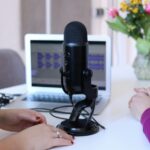Use Effective Follow Up to Cut Through the Clutter

1. Don’t Just Send One Email. It is easy to send one email and not receive a reply. Often people flag your email to reply later, they forget, or it goes in a spam filter. If you do not receive a reply within 48 hours, simply send the email again or put a short message at the top with something like “Hello Bob, I just wanted to make sure you received this message. Please confirm. Thanks, Roger” If you do not receive a reply to your second message, try other methods.
2. Pick Up the Phone. There is nothing wrong with a call to follow up on your email. You might find why you did not receive a reply and/or meet the gatekeeper (see point 3). Ask politely to speak with the recipient and say you are following up on an email message about a certain topic (ie an invitation). These days, email and texting seem to be the preferred method of communication, but a phone conversation is as close to an in-person meeting as you can get.
3. Get to Know the Gatekeepers. Many people have assistants or secretaries who manage their correspondence. When you attempt to reach the person, your contact with the gatekeeper can be just as important as the contact with the recipient of your message. Ask the gatekeeper his or her name and try to find something in common if possible. Record that information and build a relationship with that person, just like you do with the recipient of your message. You will be much more likely to get through when the gatekeeper thinks highly of you.
4. Let Time Elapse. Even though your message is extremely urgent to you, it is probably not for the recipient. Sometimes you simply need to relax and let time elapse before you follow up again. Perhaps the recipient of your message is very busy meeting a deadline or has some kind of personal or family issue that prevents him or her from replying right away. If too much time elapses and you’ve tried the above three tactics, you may need to reconsider your plan and find someone else to help you.
Those who use effective follow up are more likely to be productive and successful. Earn yourself a reputation for effective follow-up and you will be a desirable candidate for future employment. People will know they can count on you to get back to them in a timely manner and not contact them too frequently.
Roger Custer is executive director of America’s Future




